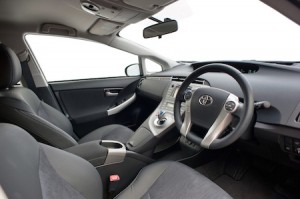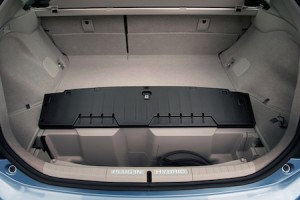 By and large following The Chancellor’s recent Budget, motorists didn’t come off too badly in terms of increased taxes and the scrapping of the planned fuel duty increase in September.
By and large following The Chancellor’s recent Budget, motorists didn’t come off too badly in terms of increased taxes and the scrapping of the planned fuel duty increase in September.
In terms of VED road tax only Group H (166g/km) and above received small increases in tax costs. But the biggest fear of a significant increase in Benefit-in-Kind (BIK) tax for company car drivers didn’t happen – yet.
But BIK tax levels will increase slowly until 2019/20 even for low CO2 emission cars. As an example the sub 50g/km of CO2 cars such as the Prius Plug-In will see BIK tax increases go from a 5% levy this year to 7% next year, 9% in 2017/18, 13% in 2018/19 and 16% in 2019/20. This progressive increase will allow company car drivers choosing a new car now to know how much personal tax they will pay in the future for that model.
The progressive rise in motoring taxes for all vehicles is all part of EU legislation which continues to force manufacturers to reach an overall average CO2 figure across their range of 95g/km by 2021.
The current lowest of the low in terms of taxes are all-electric cars, petrol/electric hybrids and the new generation of plug in electric/petrol hybrids, the latter known as PHEVs. Whilst all-electric or range extender petrol/electric car sales are only increasing slowly due to range anxiety, the relatively large sales leap has been made by plug-in hybrids such as the very clever Mitsubishi Outlander PHEV, a 4×4 SUV. This model range has surged to over 10,000 UK sales in less than a year. It has outsold every other plug-in hybrid and pure electric car. To reach the ultra-low CO2 figure most manufacturers will need to implement plug-in hybrid technologies. BMW, which already has the i3 range extender electric car and the plug-in petrol/electric hybrid i8, have just announced the X5 40e plug-in petrol/electric hybrid SUV 4×4 with CO2 emissions of 77g/km.
 Also in this PHEV class is the Toyota Prius Plug-In five-door version of their 1.8-litre petrol plus electric motor hybrid range. It is the figures that count with this car. Firstly the price – a high £33,395, nearly £8,000 more than the equivalent top spec standard Prius Hybrid. But after the Government’s ultra low emission grant is applied the on-the-road price of the plug-in variant reduces to £28,890.
Also in this PHEV class is the Toyota Prius Plug-In five-door version of their 1.8-litre petrol plus electric motor hybrid range. It is the figures that count with this car. Firstly the price – a high £33,395, nearly £8,000 more than the equivalent top spec standard Prius Hybrid. But after the Government’s ultra low emission grant is applied the on-the-road price of the plug-in variant reduces to £28,890.
Other important figures for the Prius Plug-In Hybrid are the low 49g/km CO2 emissions which currently mean no road tax, the company car Benefit-in-Kind tax is rated at only 5% (a conventional Prius is 11%) and for London residents or commuters there is no Congestion Charge. The impressive figures do not stop there because officially the Combined Cycle fuel economy is 134.5mpg and the car can be driven in electric only power with zero tailpipe emissions for a shade over 14-miles.
With these figures, apart from the price, we should all be buying one. But what of the real-life fuel economy. Used in the conventional petrol/electric hybrid mode with the 1.8-litre 98bhp petrol engine and the 81bhp electric motor driving the front wheels through and electronically controlled CVT auto transmission, my week long road test fuel consumption was 50.3mpg.
But using the plug-in facility, which can be done from the various electric car charging stations or a domestic or workplace 13amp supply, the average shot up to 103mpg for short commuter journeys. The overall average for short and long journeys finished up at 71mpg. These of course are nowhere near the official figures but the low taxes are based on official test figures and they are the ones that count for the Government’s taxation purposes. This is the situation which has not be lost on company car drivers who have been the driving force behind the Mitsubishi Outlander PHEV’s remarkable sales figures, low CO2s – low personal tax.
The Prius Plug-In usually starts off from standstill in EV (electric vehicle) mode depending on the charge in the larger lithium-ion battery pack. Electric power is of course the most economical and ecological mode for city/town driving. In the HV (hybrid vehicle) mode the car uses a combination of petrol/electric power for open road and motorway travel. But on motorway journeys there is little opportunity for hybrid vehicles to generate enough electric regeneration through de-acceleration braking. They can capture more energy on hilly roads during de-acceleration when going down hills on the overrun and the same applies in urban areas negotiating roundabouts and stopping for traffic lights. The plug-in element just extends the length of time the electric motor can influence fuel economy or give a boost to acceleration in tandem with the petrol engine.
To put the current Prius Hybrid Benefit-in-Kind tax costs into perspective. A standard Prius Hybrid with CO2 emissions of 89-92g/km is rated at 11% which means a 20% tax payer will pay between £40 and £46 per month depending on the specification of the model chosen and those figures double for a 40% taxed driver. The Prius Plug-In Hybrid with CO2 emissions of 49g/km is only available with one high spec model and is rated at 5%. So a 20% tax payer will pay just £27 per month and a 40% person £55. The only drawback between the conventional Prius Hybrid and the Plug-In Hybrid versions is the latter costs a lot more to buy, hence it is mainly only suitable for leasing company car users rather than retail buyers.
The switch between the petrol engine only, electric motor only or petrol and electric motor working in tandem is seamless so the car just glides along. It petrol engine does get noisy under load during acceleration or going up hills as the CVT transmission appears to sap the power. But on the plus side during urban driving into, around and out of towns, the driving is effortless and quiet.
 As for the design and layout the Prius Plug-In Hybrid model it is just the same as the traditional petrol/electric hybrid versions. It has the same distinctive looks, with its five doors it is a roomy, comfortable and versatile family car and it has a high level of specification.
As for the design and layout the Prius Plug-In Hybrid model it is just the same as the traditional petrol/electric hybrid versions. It has the same distinctive looks, with its five doors it is a roomy, comfortable and versatile family car and it has a high level of specification.
With only a top spec level version available in Plug-In Hybrid form the fixtures and fittings include, climate control, cruise control, electric windows and door mirrors, automatic lights and wipers, Eco driving mode, driving monitor and on-board computer, sat/nav with a 6.1-inch touchscreen, Google and Bluetooth connectivity, rear view camera, 60/40 split folding rear seats and 15-inch alloy wheels.
The interior fascia design given the technology and information on display is well laid out but overall the interior looks fairly drab due to the various tones of grey used for the trim and upholstery.
 With its larger lithium-ion battery pack the car seems well planted on the road with the weight mounted low in the car giving a low centre of gravity. There is virtually no body roll during cornering of front/rear pitching during acceleration or braking. The steering is light for in-town travel and it is easy to drive apart from the visibility through the rear tailgate window.
With its larger lithium-ion battery pack the car seems well planted on the road with the weight mounted low in the car giving a low centre of gravity. There is virtually no body roll during cornering of front/rear pitching during acceleration or braking. The steering is light for in-town travel and it is easy to drive apart from the visibility through the rear tailgate window.
It is never going to be exciting to drive but it could be more appealing both in terms of a fresher exterior image and a better use of colours and textures for the interior. Make it more appealing and exciting to look at and to be in and just maybe it will sell on its visual desirability as well as it does already for its tax savings.
MILESTONES
Toyota Prius Plug-In Hybrid -5-Door £33,395 (£28,890 after the ultra-low emission vehicle grant).
Engine/Hybrid powertrain: 1.8-litre, 4-clinder variable valve timing petrol unit with 98bhp and142Nm of torque supported by an 81bhp electric motor with 207nm of torque, lithium-ion battery pack rechargeable from a standard domestic/workplace power supply, CVT automatic transmission, Eco, EV and HV driving modes.
Performance: 112mph, 0-62mph 11.4-seconds, 134.5mpg PHEV Combined Cycle, 78.5mpg HV Combined Cycle (on real-life driving test – 103mpg PHEV mode and 50.3mpg in HV mode, overall average 71mpg)
CO2 49g/km, VED road tax £0, BIK company car tax 5%. Insurance group: 16E. Warranty: 5-years/100,000-miles. Dimensions/capacities: L 4,480mm, W 1,745mm, H 1,490mm, boot/load space 443 to 1,555-litres.
For: Low emissions, low taxes, no London Congestion Charge, ideal company car, comfortable, easy to drive, high specification.
Against: Expensive to buy for retail customers, plug-in electric range is less than most of its other PHEV class competitors, bland interior styling, needs an exterior styling re-vamp to give it more desirable kerb-appeal.

